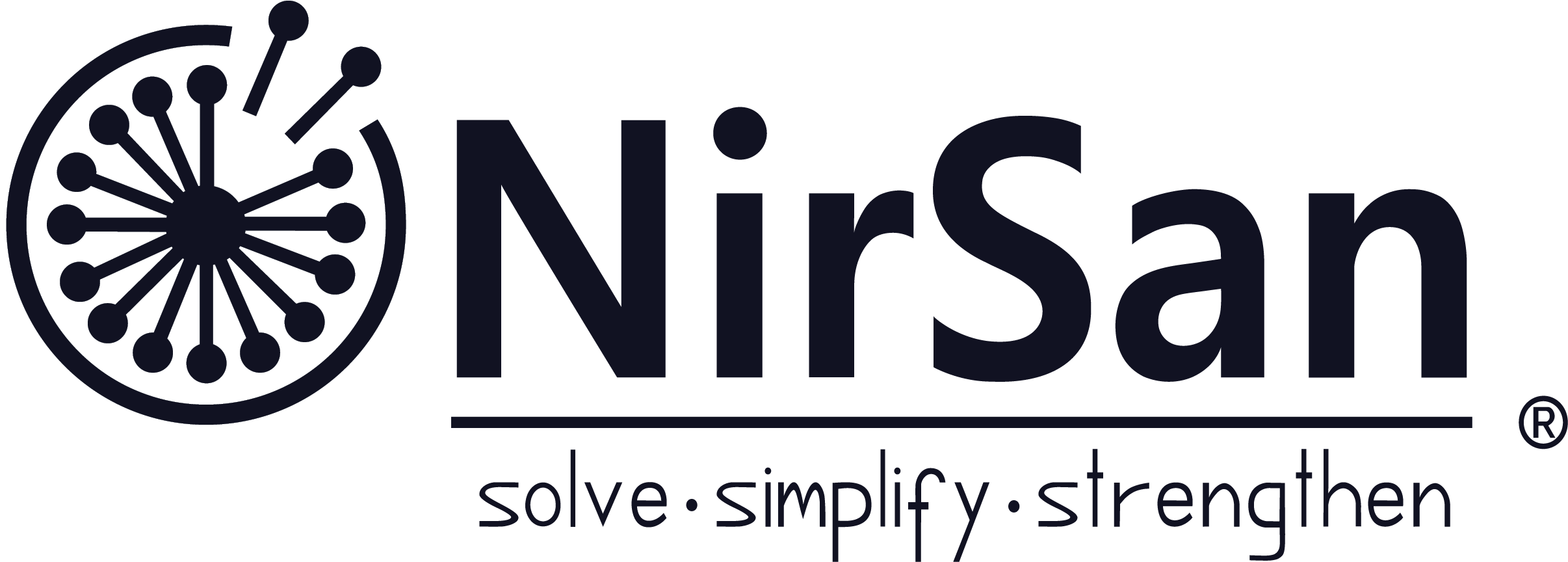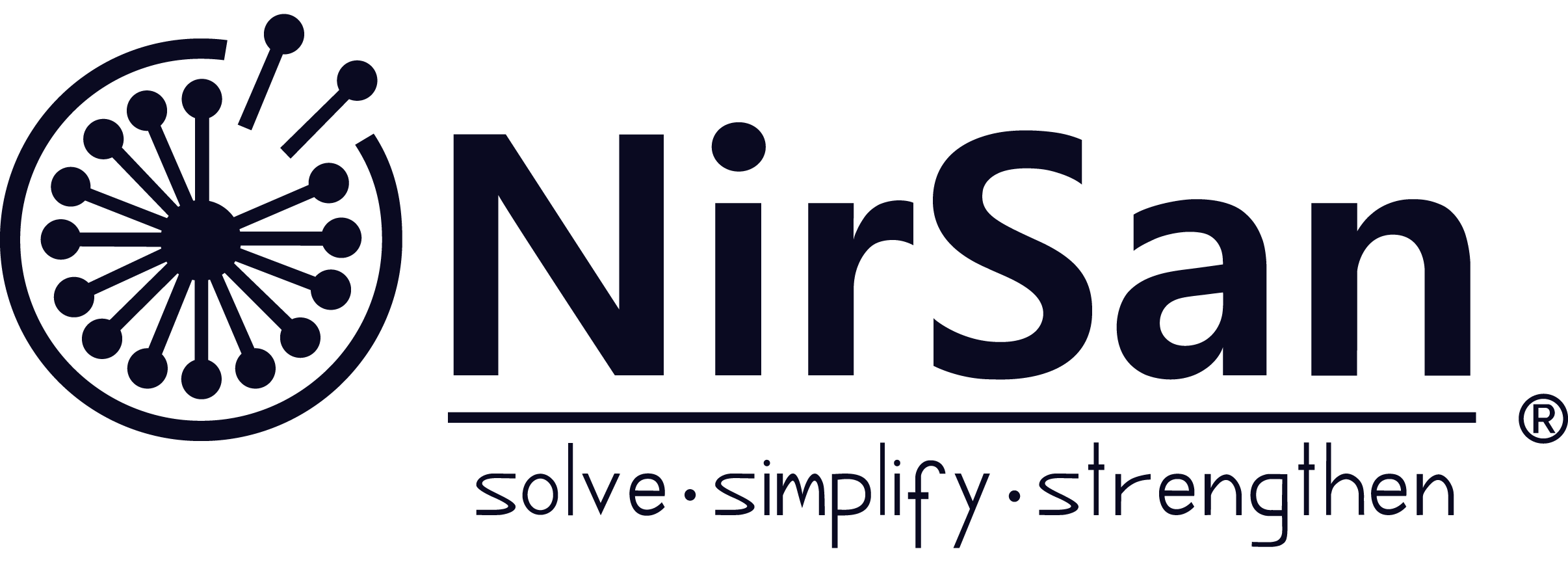
What is ORBWIN®?

Inorganic activity has remained a central part of growth and value creation. However, the basis of value creation has been confined within financial and business realms, and been diagnosed and assessed through analytical approaches. ORBWIN® outlines the attractiveness and readiness of inorganic activity by focusing on the aspects of organisation culture and people considerations. ORBWIN® identifies the synergies that come about from the alignment of doxastic states such as beliefs, desires and attitudes that are held by people of the two prospective partner organisations. ORBWIN® guides you beyond the analytics of value creation, and helps you understand the real level of alignment and commitment at a human level towards the value creation and synergy levers that have been identified and proclaimed.
While inorganic activity has remained a central part of growth and value creation, the basis of value creation has been confined to financial and business realms. ORBWIN® outlines the attractiveness and readiness of inorganic activity by focusing on the belief states of organisations and their peoples. ORBWIN® assesses the alignment of doxastic states such as beliefs, desires and attitudes that are held by people of the two organisations. ORBWIN® guides you beyond financial analytics, and allows you to assess and understand commitment at a human level to value creation and synergy capture.
While inorganic activity has remained a central part of growth and value creation, the basis of value creation has been confined to financial and business realms. ORBWIN® outlines the attractiveness and readiness of inorganic activity by focusing on the belief states of organisations and their peoples. ORBWIN® assesses the alignment of doxastic states such as beliefs, desires and attitudes that are held by people of the two organisations. ORBWIN® guides you beyond financial analytics, and allows you to assess and understand commitment at a human level to value creation and synergy capture.
While inorganic activity has remained a central part of growth and value creation, the basis of value creation has been confined to financial and business realms. ORBWIN® outlines the attractiveness and readiness of inorganic activity by focusing on the belief states of organisations and their peoples. ORBWIN® assesses the alignment of doxastic states such as beliefs, desires and attitudes that are held by people of the two organisations. ORBWIN® guides you beyond financial analytics, and allows you to assess and understand commitment at a human level to value creation and synergy capture.
Why worry about “doxastic alignment”? Why get ORBWIN®?
M&A proposals are replete with proclamations of possible synergies in business and financial domains. But what of the humans who will execute against these levers and ultimately generate value? What of the beliefs, attitudes, mindsets, hopes and agency of the peoples of organisations that purport to merge, acquire or be acquired? The extensive work available on organisational synergies in M&A adopts an archetypal approach for defining organisation culture, remains at a superficial level of diagnosis, and does not inquire into the doxastic states of employees with regards to specific value creation levers and actions. Get ORBWIN® to move beyond “spreadsheet-level value creation” and “culture-related platitudes”, and get an assessment from the coalface on whether value creation will indeed fructify.
M&A proposals are replete with proclamations of possible synergies in the deal. But what of the humans who will implement these synergies? What of the beliefs, attitudes, mindsets, hopes and agency of the peoples of organisations that purport to merge, acquire or be acquired? Organisational work in M&A diagnoses at superficial levels, and does not inquire into the doxastic states of employees in relation to specific value creation levers. Get ORBWIN® to go much beyond “spreadsheet value creation” and “culture platitudes”, and get a hard-hitting assessment from the coalface on whether value creation will indeed fructify.
M&A proposals are replete with proclamations of possible synergies in the deal. But what of the humans who will implement these synergies? What of the beliefs, attitudes, mindsets, hopes and agency of the peoples of organisations that purport to merge, acquire or be acquired? Organisational work in M&A diagnoses at superficial levels, and does not inquire into the doxastic states of employees in relation to specific value creation levers. Get ORBWIN® to go much beyond “spreadsheet value creation” and “culture platitudes”, and get a hard-hitting assessment from the coalface on whether value creation will indeed fructify.
M&A proposals are replete with proclamations of possible synergies in the deal. But what of the humans who will implement these synergies? What of the beliefs, attitudes, mindsets, hopes and agency of the peoples of organisations that purport to merge, acquire or be acquired? Organisational work in M&A diagnoses at superficial levels, and does not inquire into the doxastic states of employees in relation to specific value creation levers. Get ORBWIN® to go much beyond “spreadsheet value creation” and “culture platitudes”, and get a hard-hitting assessment from the coalface on whether value creation will indeed fructify.

Who will benefit from ORBWIN®?

Chief executives and board members benefit from ORBWIN® in several ways. First, ORBWIN® provides a perceptive and specific sense of the mood of the peoples and organisations while going into a transaction. Second, ORBWIN® makes a clear assessment of the extent to which value creation levers are likely to be a reality. Third, once a transaction is over and integration efforts have started, ORBWIN® diagnoses doxastic or belief-oriented states that can be impediments to value creation and synergy capture. CFOs benefit from a pragmatic and execution-oriented view of synergies, and can incorporate this into the “thesis of the deal”. Integration and implementation leaders benefit from the deep doxastic diagnosis, and can unblock attitudes and mindsets that impede progress.
Chief executives and board members benefit from ORBWIN®. First, ORBWIN® provides a perceptive sense of the mood of the organisations entering a transaction. Second, it makes a clear assessment of the extent to which value creation levers will be a reality. Third, once integration has started, ORBWIN® diagnoses doxastic states that can impede synergy capture. CFOs can now incorporate a pragmatic execution-oriented view of synergies into the “thesis of the deal”. Integration leaders benefit from the deep doxastic diagnosis by being able to unblock attitudes and mindsets that impede progress.
Chief executives and board members benefit from ORBWIN®. First, ORBWIN® provides a perceptive sense of the mood of the organisations entering a transaction. Second, it makes a clear assessment of the extent to which value creation levers will be a reality. Third, once integration has started, ORBWIN® diagnoses doxastic states that can impede synergy capture. CFOs can now incorporate a pragmatic execution-oriented view of synergies into the “thesis of the deal”. Integration leaders benefit from the deep doxastic diagnosis by being able to unblock attitudes and mindsets that impede progress.
Chief executives and board members benefit from ORBWIN®. First, ORBWIN® provides a perceptive sense of the mood of the organisations entering a transaction. Second, it makes a clear assessment of the extent to which value creation levers will be a reality. Third, once integration has started, ORBWIN® diagnoses doxastic states that can impede synergy capture. CFOs can now incorporate a pragmatic execution-oriented view of synergies into the “thesis of the deal”. Integration leaders benefit from the deep doxastic diagnosis by being able to unblock attitudes and mindsets that impede progress.
Where (in which settings) should you get ORBWIN®?
Get ORBWIN® when you are contemplating inorganic growth and are faced with any of five symptoms. First, the “definitive financial argument”: when the thesis of the deal is entirely and convincingly predicated on business and financial arguments. Second, the “culture platitude”: when the deal thesis comes with platitudes and truisms related to organisation culture and people motivation. Third, the “people block”: when one of the organisations has suffered from instances of poor integration driven by people factors. Fourth, the “killer synergy”: when deal thesis is disproportionately predicated on one or a handful of synergies coming to pass. Fifth, the “uncertain integration”: when the leaders of the integration effort are uncertain about their approach to mobilise a groundswell of energy and inspiration.
Get ORBWIN® when faced with any of the following five symptoms. First, “definitive financial argument”: when deal thesis is entirely predicated on a plethora of business and financial arguments. Second, “culture platitude”: when deal thesis comes with truisms about organisation and people. Third, “people block”: when organisation has seen people-driven instances of poor integration. Fourth, “killer synergy”: when there is disproportionate dependence on a handful of synergies. Fifth, “uncertain integration”: when leaders are unable to mobilise a groundswell of energy and inspiration.
Get ORBWIN® when faced with any of the following five symptoms. First, “definitive financial argument”: when deal thesis is entirely predicated on a plethora of business and financial arguments. Second, “culture platitude”: when deal thesis comes with truisms about organisation and people. Third, “people block”: when organisation has seen people-driven instances of poor integration. Fourth, “killer synergy”: when there is disproportionate dependence on a handful of synergies. Fifth, “uncertain integration”: when leaders are unable to mobilise a groundswell of energy and inspiration.
Get ORBWIN® when faced with any of the following five symptoms. First, “definitive financial argument”: when deal thesis is entirely predicated on a plethora of business and financial arguments. Second, “culture platitude”: when deal thesis comes with truisms about organisation and people. Third, “people block”: when organisation has seen people-driven instances of poor integration. Fourth, “killer synergy”: when there is disproportionate dependence on a handful of synergies. Fifth, “uncertain integration”: when leaders are unable to mobilise a groundswell of energy and inspiration.

How does ORBWIN® work?

The design of ORBWIN® is based on our proprietary eight-part framework called ‘DOXATVAL’. With ORBWIN® you undergo the four stages of ‘installation’, ‘engagement’, ‘analysis’ and ‘dissemination’ over a period of twelve weeks. To install ORBWIN®, you identify symptoms of inadequacy in the inorganic effort; establish scope by pointing to synergy proposals that need doxastic substantiation; decide respondents from one or both organisations; and provide data related to proclaimed synergies. ORBWIN® interacts with subjects in order to assess levels of doxastic alignment and commitment. The final output for leadership includes a quantitative assessment of doxastic states translated into “likelihood scores” of value creation and synergy capture, supplemented by qualitative narration.
The design of ORBWIN® is based on our proprietary eight-part framework called ‘DOXATVAL’. The four stages of “installation”, “engagement”, “analysis” and “dissemination” takes place over twelve weeks. To install ORBWIN®, you identify the symptoms of inadequacy; point to synergy and value creation proposals that need doxastic substantiation; decide the respondents; and provide data related to synergies. ORBWIN® then interacts with subjects. The final output includes a quantitative assessment of doxastic states translated into “likelihood scores” of synergy capture, and is supplemented by qualitative narration.
The design of ORBWIN® is based on our proprietary eight-part framework called ‘DOXATVAL’. The four stages of “installation”, “engagement”, “analysis” and “dissemination” takes place over twelve weeks. To install ORBWIN®, you identify the symptoms of inadequacy; point to synergy and value creation proposals that need doxastic substantiation; decide the respondents; and provide data related to synergies. ORBWIN® then interacts with subjects. The final output includes a quantitative assessment of doxastic states translated into “likelihood scores” of synergy capture, and is supplemented by qualitative narration.
The design of ORBWIN® is based on our proprietary eight-part framework called ‘DOXATVAL’. The four stages of “installation”, “engagement”, “analysis” and “dissemination” takes place over twelve weeks. To install ORBWIN®, you identify the symptoms of inadequacy; point to synergy and value creation proposals that need doxastic substantiation; decide the respondents; and provide data related to synergies. ORBWIN® then interacts with subjects. The final output includes a quantitative assessment of doxastic states translated into “likelihood scores” of synergy capture, and is supplemented by qualitative narration.
When during the operating year should you get ORBWIN®?
ORBWIN® is designed for periodic as well as episodic usage. Under neither of these situations is ORBWIN® usage linked to the organisation’s operating calendar. ORBWIN® requires twelve weeks to go through the ‘installing’, ‘engaging’, ‘analysing’ and ‘disseminating’ phases. When using ORBWIN® episodically, get it when you contemplate inorganic growth and observe any of the five symptoms mentioned earlier. We advise usage early during the inorganic cycle, particularly alongside the creation of the deal thesis. ORBWIN® is used periodically in biannual or annual manner in situations that involve lengthy and complex integration efforts. The periodic output provides leadership with a “timeline view” of employees’ doxastic states, and provides advance indication of progress or regress.
ORBWIN® is designed for periodic as well as episodic usage. Under neither of these situations is ORBWIN® usage linked to the organisation’s operating calendar. When using ORBWIN® episodically, get it when you observe any of the five symptoms mentioned earlier. We advise early usage, ideally alongside the creation of the deal thesis. ORBWIN® is used periodically in biannual or annual manner in situations involving lengthy and complex integration. This periodic output provides leadership with a “timeline view” of employees’ doxastic states, and provides advance indication of progress or regress.
ORBWIN® is designed for periodic as well as episodic usage. Under neither of these situations is ORBWIN® usage linked to the organisation’s operating calendar. When using ORBWIN® episodically, get it when you observe any of the five symptoms mentioned earlier. We advise early usage, ideally alongside the creation of the deal thesis. ORBWIN® is used periodically in biannual or annual manner in situations involving lengthy and complex integration. This periodic output provides leadership with a “timeline view” of employees’ doxastic states, and provides advance indication of progress or regress.
ORBWIN® is designed for periodic as well as episodic usage. Under neither of these situations is ORBWIN® usage linked to the organisation’s operating calendar. When using ORBWIN® episodically, get it when you observe any of the five symptoms mentioned earlier. We advise early usage, ideally alongside the creation of the deal thesis. ORBWIN® is used periodically in biannual or annual manner in situations involving lengthy and complex integration. This periodic output provides leadership with a “timeline view” of employees’ doxastic states, and provides advance indication of progress or regress.

© Copyright 2019  All rights reserved.
All rights reserved.
© Copyright 2019  All rights reserved.
All rights reserved.
© Copyright 2019  All rights reserved.
All rights reserved.
© Copyright 2019  All rights reserved.
All rights reserved.
